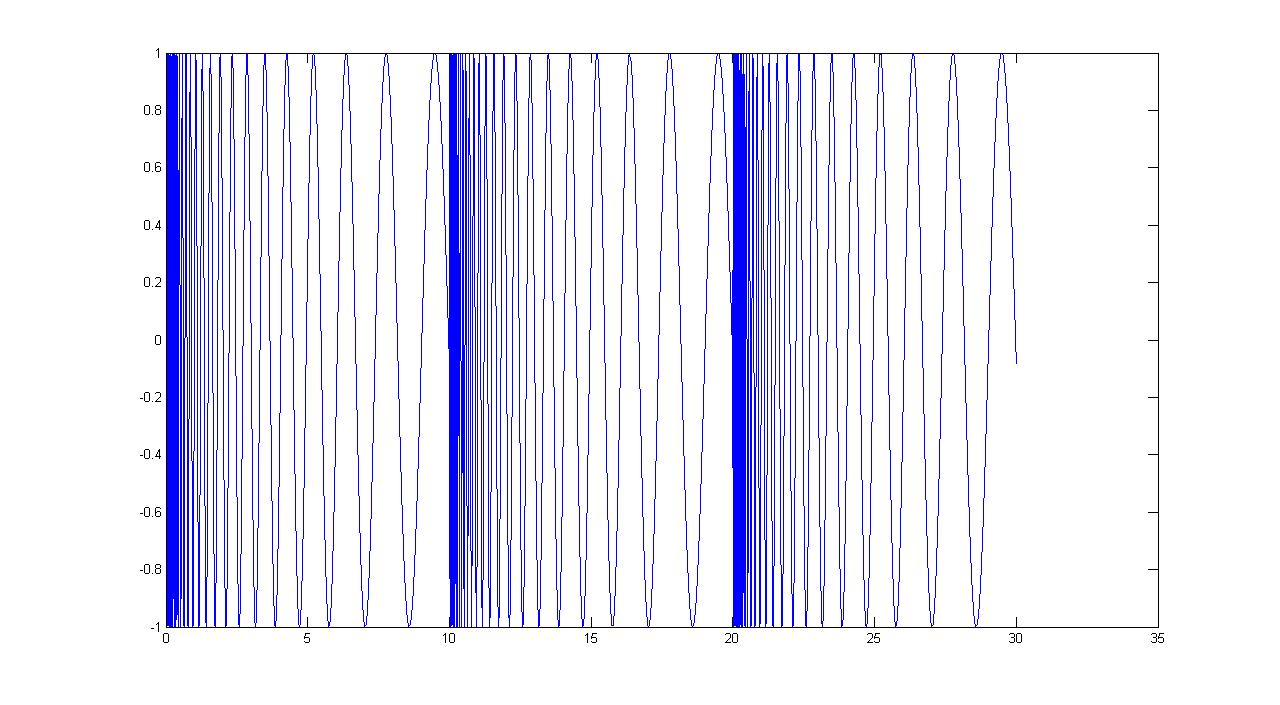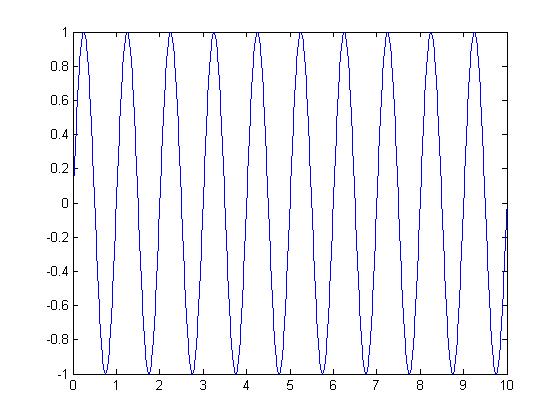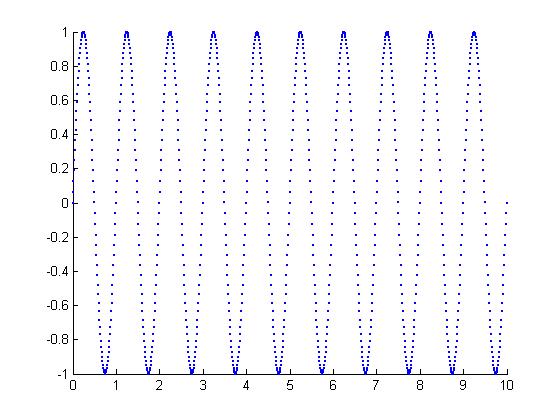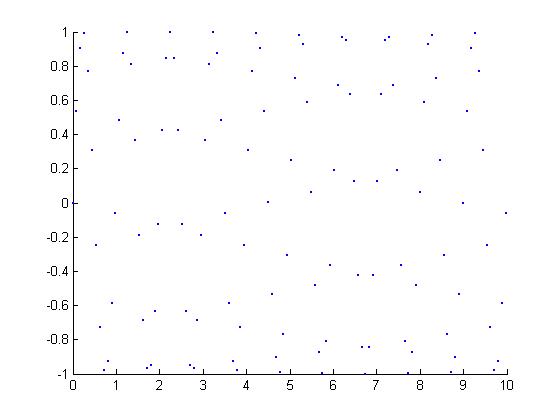(New page: Here I use the CT signal x=sin(2*pi*t): Image:Simple_sin_function.jpg Producing a periodic discrete time signal from the signal above: Image:Simple_sin_function_DT.jpg Changing...) |
(→Making a Periodic Signal from a sum of non-periodic signals) |
||
| (4 intermediate revisions by the same user not shown) | |||
| Line 1: | Line 1: | ||
| − | Here I use the CT signal x=sin(2*pi*t): | + | Here I use the CT signal x=sin(2*pi*t) with a period of 1 sec: |
[[Image:Simple_sin_function_ECE301Fall2008mboutin.jpg]] | [[Image:Simple_sin_function_ECE301Fall2008mboutin.jpg]] | ||
| − | Producing a periodic discrete time signal from the signal above: | + | Producing a periodic discrete time signal from the signal above with sampling rate SR=0.01: |
[[Image:Simple_sin_function_DT_ECE301Fall2008mboutin.jpg]] | [[Image:Simple_sin_function_DT_ECE301Fall2008mboutin.jpg]] | ||
| − | Changing the sampling rate to produce a non-periodic DT signal: | + | Changing the sampling rate to produce a non-periodic DT signal SR=0.09: |
[[Image:Non_periodic_simple_sin_function_DT_ECE301Fall2008mboutin.jpg]] | [[Image:Non_periodic_simple_sin_function_DT_ECE301Fall2008mboutin.jpg]] | ||
| + | |||
| + | ==Making a Periodic Signal from a sum of non-periodic signals== | ||
| + | |||
| + | Using the non-periodic <math>\ y= \sin(10 \pi \ln(t)) </math> I used in homework 1, and summing <math>\ \sum_{k=3} y(t+k10) </math> on a finite interval to create a periodic signal: | ||
| + | [[Image:Perodic nonperiodic wave_ECE301Fall2008mboutin.jpg]] | ||
Latest revision as of 16:11, 12 September 2008
Here I use the CT signal x=sin(2*pi*t) with a period of 1 sec:
Producing a periodic discrete time signal from the signal above with sampling rate SR=0.01:
Changing the sampling rate to produce a non-periodic DT signal SR=0.09:
Making a Periodic Signal from a sum of non-periodic signals
Using the non-periodic $ \ y= \sin(10 \pi \ln(t)) $ I used in homework 1, and summing $ \ \sum_{k=3} y(t+k10) $ on a finite interval to create a periodic signal:





